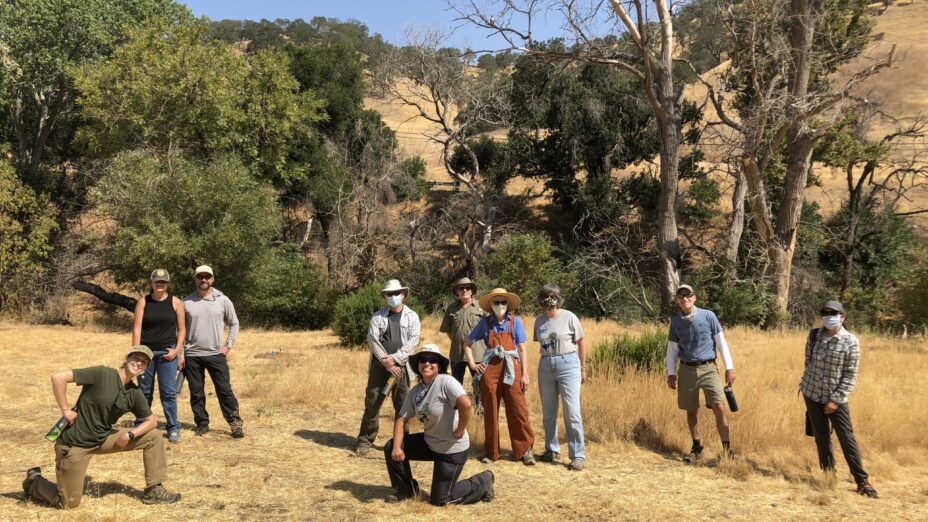
Creeks offer crucial riparian habitats for many different species of flora and fauna. Part of Save Mount Diablo’s responsibilities includes protecting and maintaining the creeks on the properties that we own or manage. Our volunteers play an integral part in making this happen.
Here are some of the ways in which they help us maintain and restore the local creeks in various watersheds.
Diablo Restoration Team (DiRT) and Stewardship Projects: Restoring Our Creeks
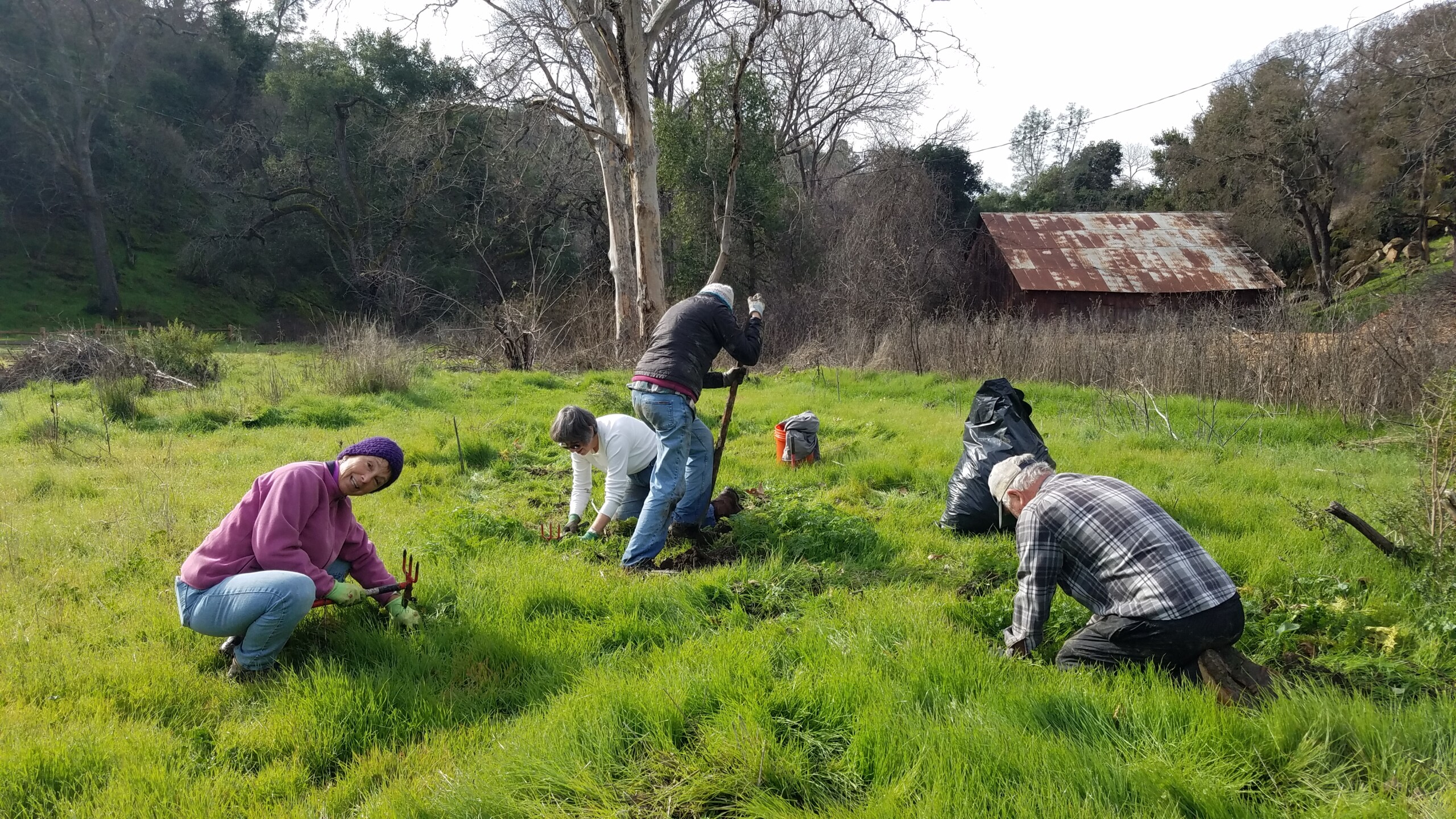
Volunteers remove invasive plants at a DiRT day at Marsh Creek 4. Photo by Roxana Lucero.
Many of our Diablo Restoration Team (DiRT) days are focused on riparian (creekside) habitat restoration. Community members, students with Conservation Collaboration Agreements (CCAs), and property stewards all contribute to this effort.
They plant natives, remove invasive plants, or maintain restoration sites by mulching, watering, and caging plants to protect them against the elements. Our stewardship team also completes larger projects, such as removing failed culverts at Mangini Ranch. Our watering crew also supplements these efforts during the dry months.
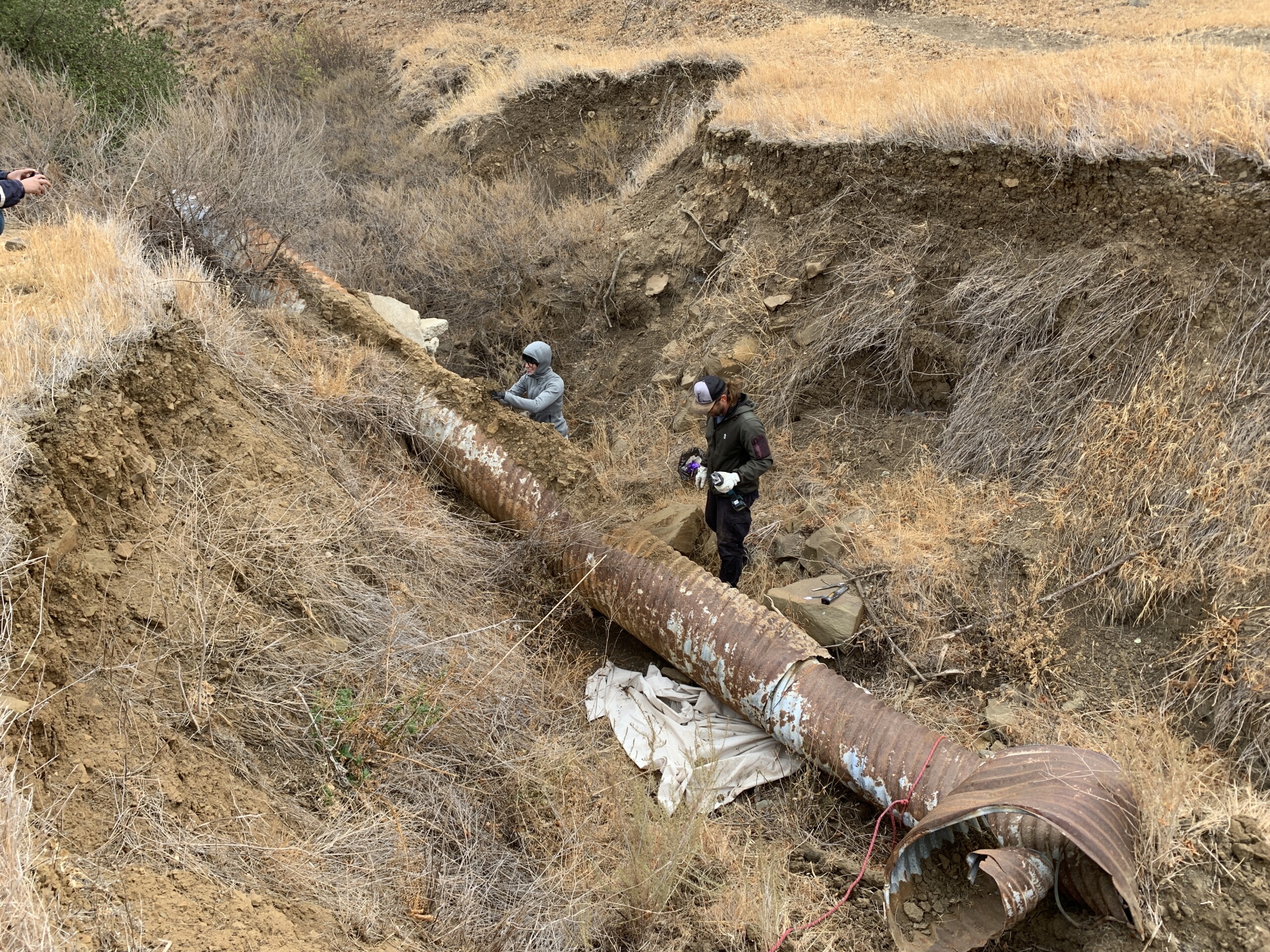
Culvert removal at Mangini Ranch. Photo by Haley Sutton.
Owen Lee, who previously helped out at DiRT days and was a part of our watering crew, says, “The satisfactory feeling I felt after my first DiRT day was unforgettable.”
DiRT team and watering crew member Dana Ellingson adds, “The most satisfying thing for me is revisiting planting sites and seeing that some of our plants are thriving.”
Watering Crew: Keeping Native Plants Flourishing
As part of our Climate Action Plan, we have committed to planting and protecting 10,000 trees and plants in 10 years, some of which will serve to restore riparian corridors. Volunteers and staff have been planting native plants and trees for more than a decade.

New plantings at Marsh Creek 7. Photo by Haley Sutton.
Our watering crew has been bolstering our restoration efforts by making sure the plantings get enough water during dry months, typically from May through November. However, because of climate change, watering has started as early as March.
The watering crew’s tasks involve carrying water jugs over uneven and sloped terrain to plantings and volunteer seedlings. (The latter are seedlings that sprout voluntarily on their own, without human intervention.) The crew waters at Ang, Curry Canyon Ranch, Marsh Creek 1, Marsh Creek 4, Marsh Creek 7, and Big Bend.
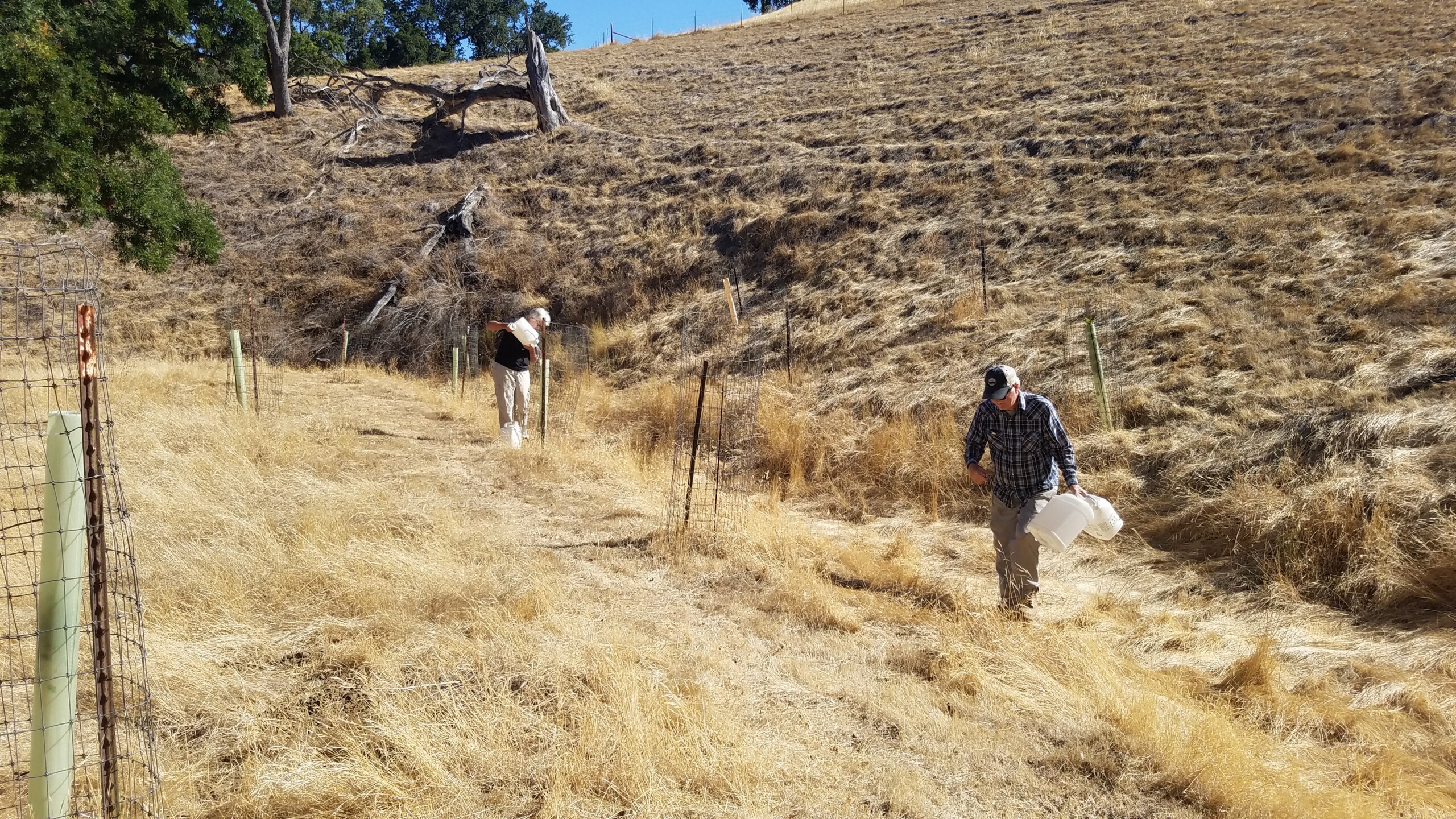
Watering crew in action at Ang. Photo by Roxana Lucero.
Volunteer Jamie Fong remarks that watering the plantings in the summer heat was one of the most challenging projects he’s worked on.
Coastal Cleanup Day: Removing Trash from Kirker Creek
California Coastal Cleanup Day takes place every third Saturday in September across the state. This year, over 26,000 volunteers removed more than 300,000 pounds of trash from beaches and waterways.
Save Mount Diablo participates in this annual event as well, at Thomas Kirker Creek in Pittsburg. This year our volunteers gathered 250 pounds of waste from the creek bed and banks.
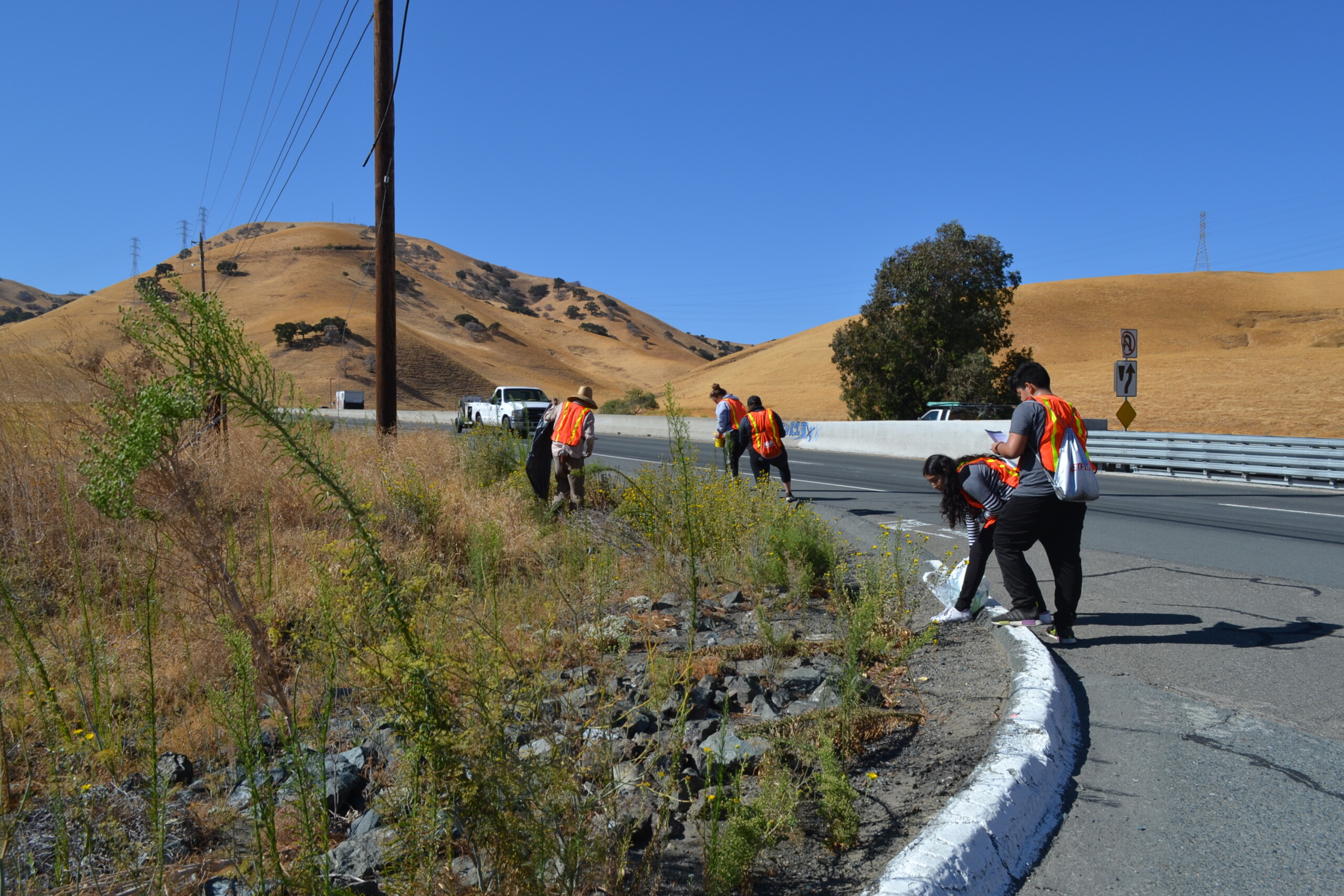
Volunteers picking up trash along the road at Thomas Kirker Creek during Coastal Cleanup Day. Photo by Roxana Lucero.
Dave Sharp, who has been involved in DiRT days and Coastal Cleanups, notes that illegal dumping along Marsh Creek is a serious problem. “People dumping trash, appliances, you name it . . . at Big Bend, one of my favorite properties, most of a living room was dumped over the side!”
Marsh Creek Monitors: Collecting Useful Stream Data
In partnership with The Watershed Project, volunteers monitor sites along Marsh Creek, including on Save Mount Diablo properties, and collect data such as water pH, total dissolved solids, turbidity, etc. The collected data helps inform future restoration projects and environmental policy to build healthy watersheds.

Healthy creeks are crucial for habitat restoration. Photo by Scott Hein.
Help Us Plant and Protect Trees, Keep Creeks Clean, and More
Your help makes a huge impact, and we greatly appreciate all of our volunteers. DiRT is currently focusing on tree protection, watering efforts, and acorn collection and planting. If this sounds interesting and you would like to get involved, check out our volunteer opportunities or reach out to Haley Sutton. Stay tuned as we feature more volunteers in future blog posts.
Top photo by Denise Castro.

